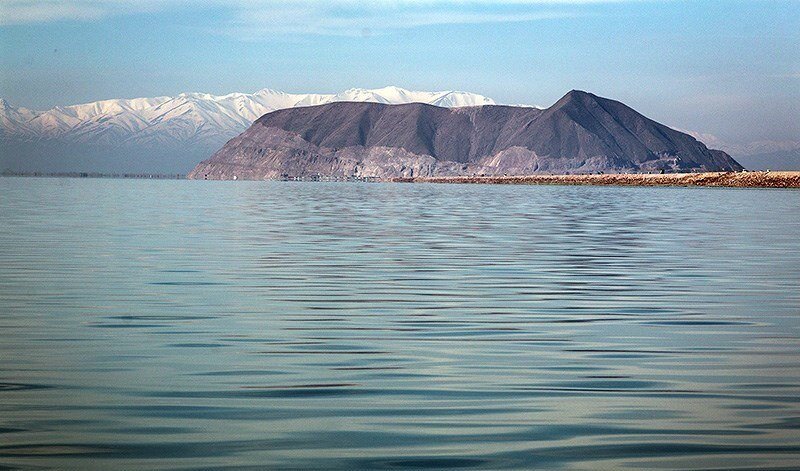Lake Urmia to be fully revived within 7 years

TEHRAN – With the complete implementation of two water transfer projects, Lake Urmia will be completely restored by the Iranian calendar year 1406 (March 2027-March 2028), the Department of Environment (DOE) chief has announced.
Shared between West Azarbaijan and East Azarbaijan provinces in northwestern Iran, Lake Urmia, was once the largest salt-water lake in West Asia.
However, decades of long-standing drought spells excessive dam construction, and elevated hot summer temperatures that speed up evaporation, as well as increased water demands in the agriculture sector, shrank the lake drastically.
In 1999 the volume of water which was at 30 billion cubic meters drastically decreased to half a billion cubic meters in 2013. Moreover, the lake surface area of 5,000 square kilometers in 1997 shrunk to one-tenth of that to 500 square kilometers in 2013.
A project on transferring water from Zab River to the lake has been proposed by the government and a budget of 3 trillion rials (nearly $71 million at the official rate of 42,000 rials) has been earmarked in this regard, IRNA quoted Issa Kalantari as saying on Monday.
The Zab water transfer tunnel to Lake Urmia will be completed in the next six months, and with its operation, the lake's water volume will reach 14.7 billion cubic meters over the next seven years and will rehabilitate the lake after years, he stated.
With the transfer of water from Zab, about one billion cubic meters of water will enter the lake permanently annually, he highlighted.
The government has allocated 100 trillion rials (around $2.3 billion) in planning and implementing a project to transfer water from the Kanisib Dam to the lake, Mohammad Bagher Nobakht, head of Budget and Planning Organization, said.
According to the project, about 36 km of tunnels have been constructed with the aim of transferring 600 million cubic meters to the lake annually, he noted.
Nobakht continued that “the project is in the final stages, so we expect to exploit it later this summer.”
Kalantari also noted that one of the most important factors in the revitalization of Lake Urmia is a 40 percent reduction in water consumption in the agricultural sector, 36 percent of which has been achieved so far.
Contrary to assumptions that water reduction was thought to lead to a reduction in crop production, according to the Ministry of Agriculture, there has been a 17 percent increase in crop production in the lake's catchment area, he stated.
This increase shows that water waste in the agricultural sector of the catchment area of Lake Urmia has been very high, he lamented.
“In the last seven years, we have fallen behind the plan to revitalize Lake Urmia due to problems and financial constraints by 12 to 14 months, but the lake will finally be fully restored in 2027”, he emphasized.
Farhad Sarkhosh, head of the Lake Urmia Restoration Program’s office in West Azarbaijan province said that the lake’s level has reached 1,271.87 meters, which is 37 centimeters higher than the last year’s level.
The lake's water volume was estimated at more than 4.620 billion cubic meters, which indicates an increase of 1.010 billion cubic meters compared to the last year and 1.7 meters since 2014.
The above normal levels of rain came to help conservation measures to preserve the Lake Urmia, however, it still needs 9.5 billion cubic meters of water to reach its ecological level of 1274.10.
The lake was home to many migratory and indigenous animals including flamingos, pelicans, egrets, and ducks, and attracted hundreds of tourists every year who had bathed in the water to take advantage of the therapeutic properties of the lake.
These days, life has returned to Lake Urmia. The lake now has so much water that tourists can swim in its shiny water and birds and aquatic species such as flamingos and Artemia have returned to it, but it still has a long way to completely survive.
FB/MG
